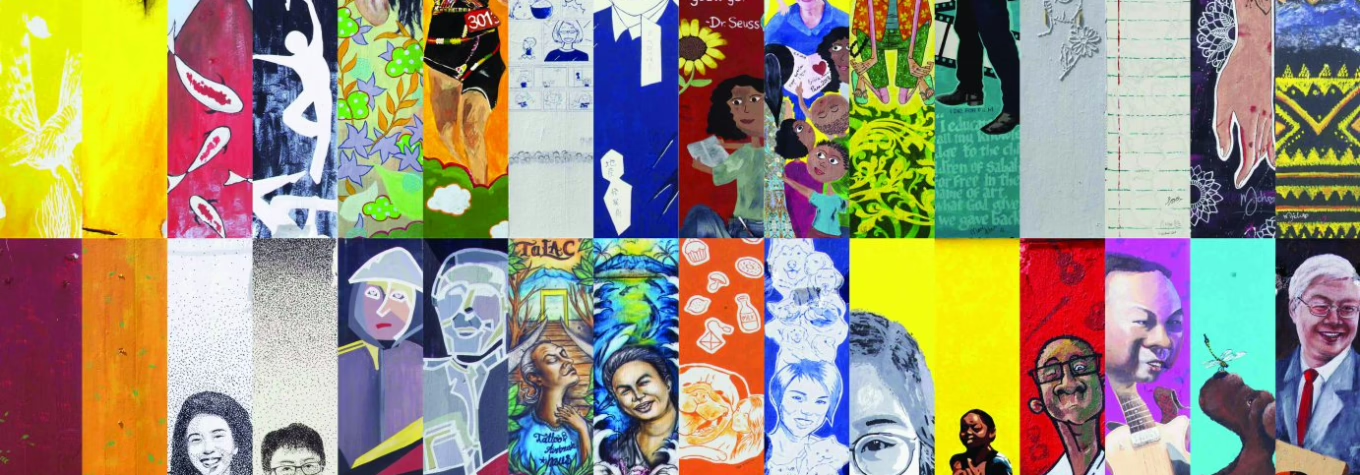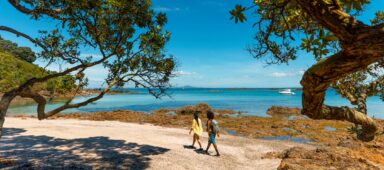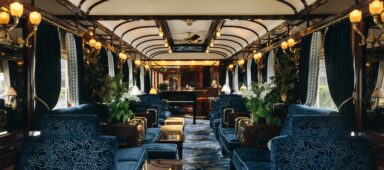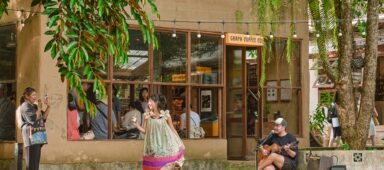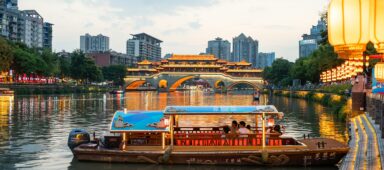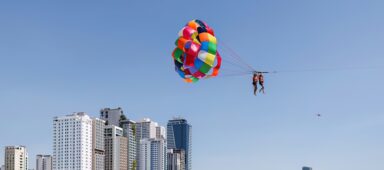Sabahan artist ‘Red’ Hong Yi and local filmmaker-and-writer Jared Abdul Rahman create art from abandoned site to celebrate the Malaysian state and its people.
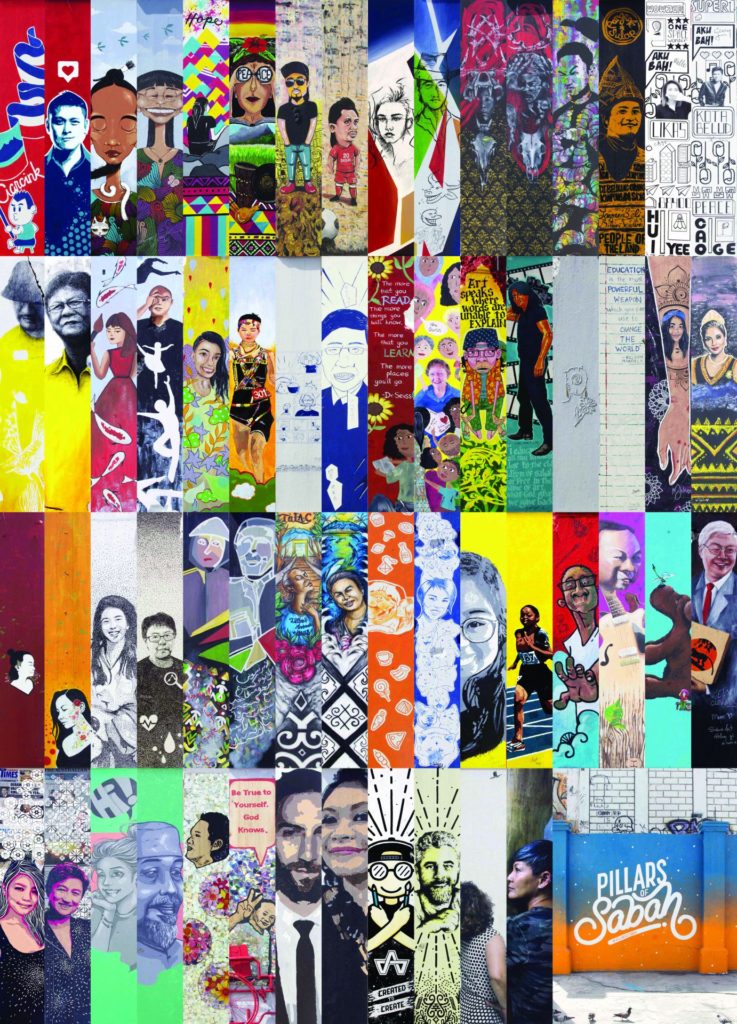
Tell us more about Pillars of Sabah.
Jared: Pillars of Sabah is a collective street art project by 30 local artists, to honour inspiring Sabahans and celebrate the beauty and diversity of the Sabah art community. There’s an abandoned open-air space in the Kota Kinabalu (KK) city centre with 30 pillars, and each artist was allocated one to portray, through painting or a medium of their choice, a person of inspiration with Sabahan roots. On the flipside, we asked them to do a self-portrait.
Red: The site was formerly the Land and Survey Building that burnt down in the 1990s. It’s managed by the Sabah Art Gallery, and occasionally, there’s nice graffiti there, but it’s somewhat abandoned despite its central location. We thought it’d be great to give it a facelift and get the art community involved.
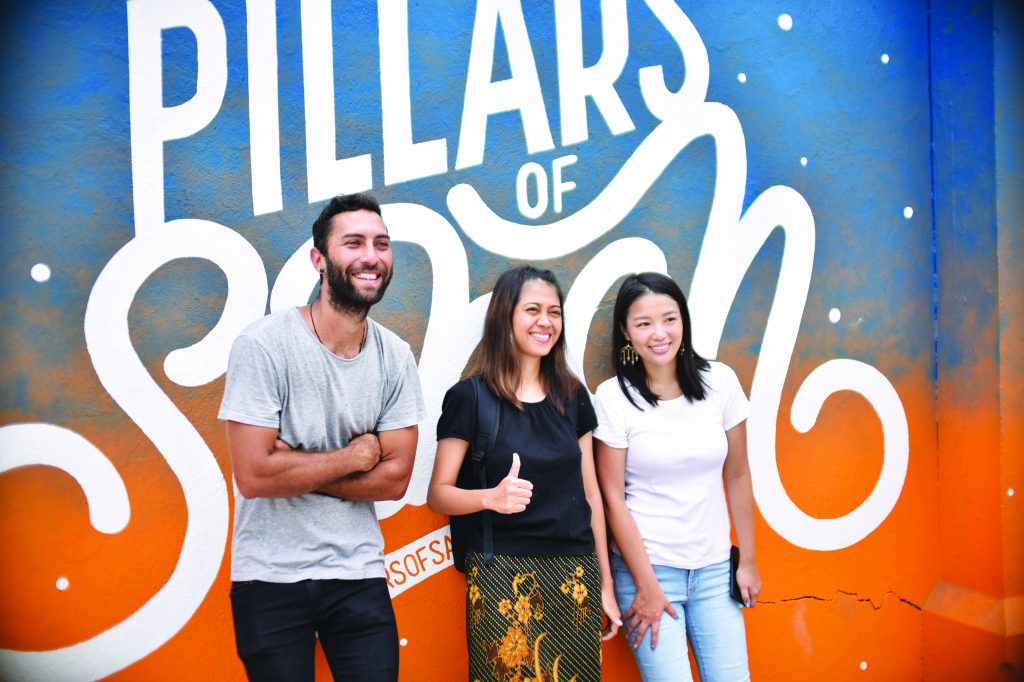
How did the idea come about?
Red: Jared and I were secondary school classmates, but we reconnected earlier this year through WhatsApp. The initial plan was to collaborate on a piece for the Malaysian general elections (which took place in May this year) and paint the wall at the project site a bright yellow. We were really surprised by the election results! As an homage to the ‘new’ Malaysia, we thought of doing something meaningful for Malaysia Day on 16 September, and that’s how Pillars of Sabah was born.
What was the artist selection process like?
Jared: We had a month to gather the artists and put everything together. We wanted diversity, so we tried to get both professionals and amateurs, male and female, from different ethnicities, as well as a mix of art styles.
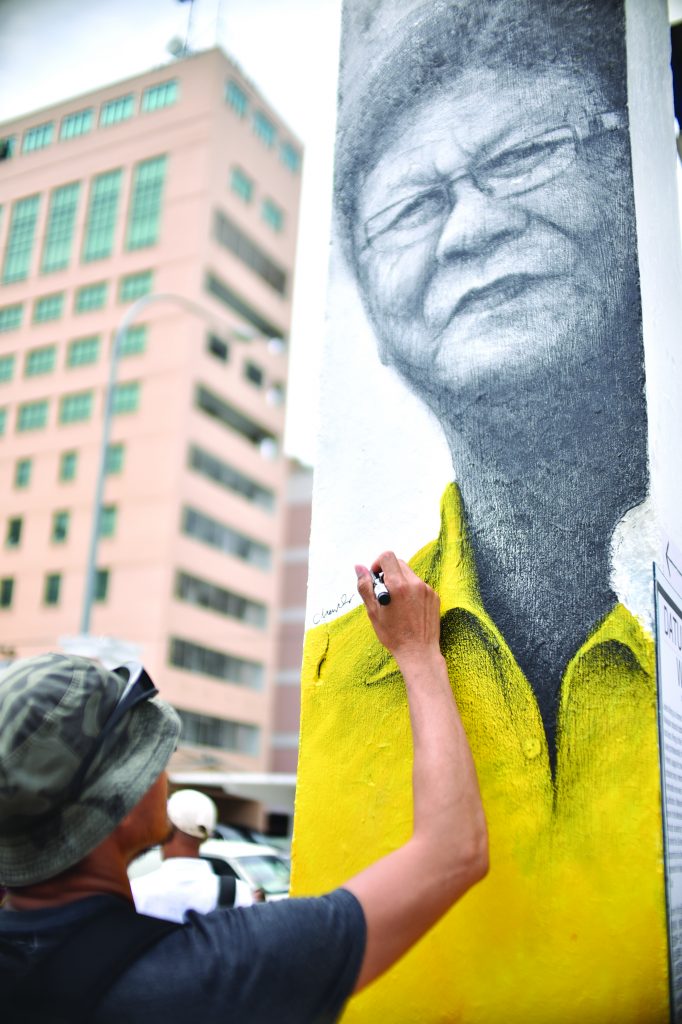
Were there guidelines they had to follow?
Jared: We gave the artists creative freedom, but we also wanted them to pick a nominee that truly inspired them. We had prominent Sabahan figures like former national footballer Dato’ James Wong, but we also had a lot of unsung heroes. The reason we told the artists to paint themselves on the other side of the pillar is because we tend to look to the rest of the world for inspiration, forgetting that inspiration can be found at home too. We need to start celebrating ourselves and our local heroes.
Red: We didn’t want to limit the definition of Sabahan to only people who are born in Sabah, but also those who have roots here or those who call Sabah home. I painted Penny Wong, an Australian senator who was born and raised in Sabah. One of the artists chose to highlight Sylvia Jeanes – she’s an Australian lady who has spent over 50 years in Sabah helping the poor and underprivileged. She was also there during our launch, and it was heartwarming to see her mouthing the words to Negaraku (Malaysia’s national anthem)!
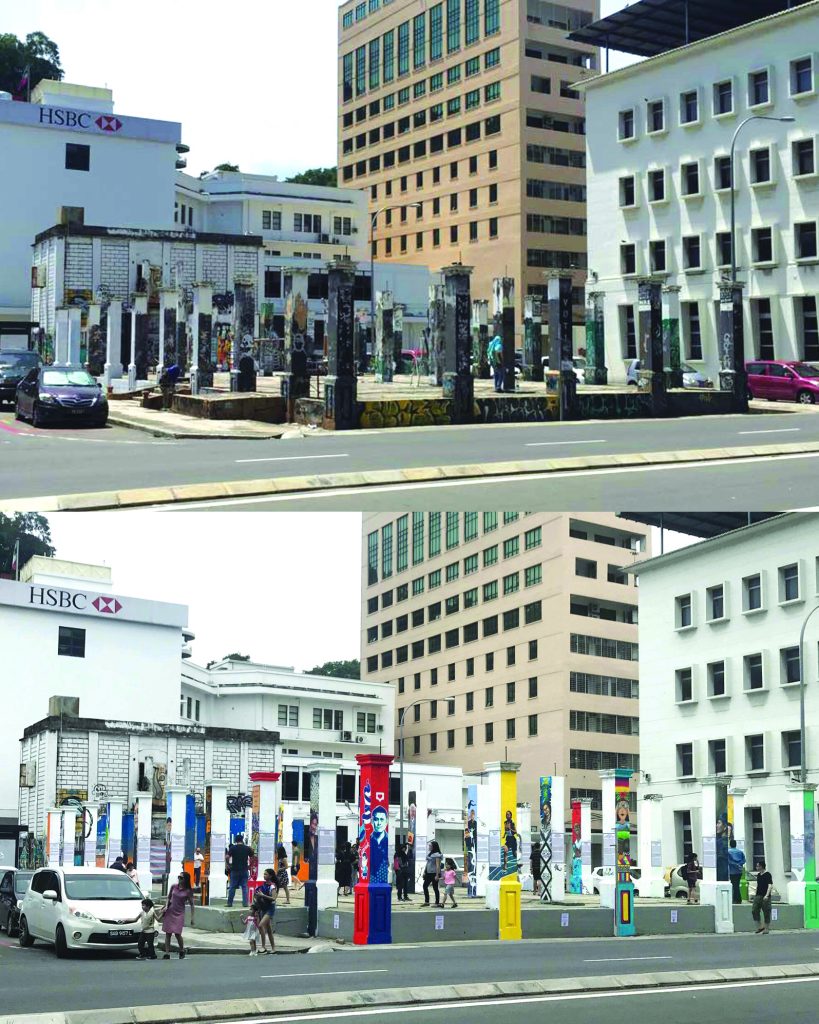
What were some of the challenges you faced?
Red: This was my first time organising a project! Before, I purely played the artist role. Asking for sponsorship, getting permission from relevant parties, and gathering and managing artists were all new experiences for me, but it has been really fun. On top of that, we had to prepare the site and transport work materials. Weather and rain were a big challenge too. It gets really hot in KK by 8 a.m. so people started going to the site earlier. One artist wanted to start working at 5 a.m. and because either Jared or I had to be on site to supervise, we were like, oh man! (laughs).
Jared: Coordinating the project was tough as we had a short timeline and a large number of participants. Back then, to get anything done you’d have to organise a meeting, but it’s difficult to arrange for 30 people to get together at the same time. These days, it’s much easier because of instant messaging. Everything from sending documents and proposals to assigning pillars to the artists was done through WhatsApp.
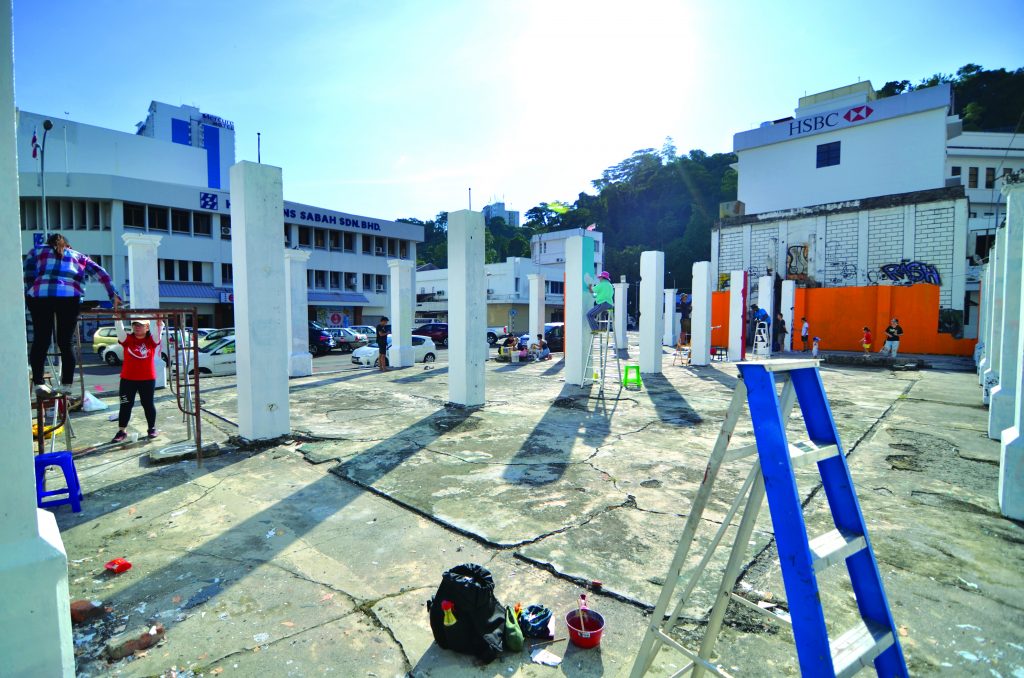
How has the response been so far?
Red: We launched on Malaysia Day, and the response has been super encouraging. The mayor of KK came to the event and he was really impressed, so he declared that the site would be up for a whole year. The site is managed by the Sabah Art Gallery and the local council, so we hope they can maintain it properly.
Ultimately, what do you hope for visitors to take away from Pillars of Sabah?
Red: We hope it can be something similar to Ernest’s (Lithuanian artist Ernest Zacharevic) murals in Penang. Penang has become an art hub; tourists go there just to see the murals, and they get to experience everything else Penang has to offer. If we can have that in KK, that would be amazing!
Jared: We want this to be a place where people can learn about KK’s art community and check out their work. Since their bios and contact information are there, it’s an open portfolio for the public to reach out to them. It’s also a great way to share inspiring stories and honour the contributions of Sabahans.
Any plans for similar projects in the future?
Red: We’re open to any possibility. It would be great if this becomes a regular thing. We featured 30 artists this time but there are still plenty of other artists in the Sabah art community.
Jared: I think we’ve achieved what we’ve set out to do. We don’t necessarily have to be involved in future projects. It would be rewarding enough to see other people kickstart their own initiatives in their respective cities and towns. Maybe Pillars of Pahang or Pillars of Johor.
Editor’s Note:
The following artists were involved in the Pillars of Sabah project:
Aaron Lam, Azlan Dulikab, Belinda Chong, Binjai Kartunis, Charles Mawan, Charmaine Liau, Chau Xhien, Chin Jing Yuan, Danielle Soong, Elicia Lo, Hani Mahdi, Herman Duang, Hong Yi, Intan Mumirah, Japson Wong, Jared Abdul Rahman, Joanne Allison Joannes, Josrie Haral, Ken Tan, Mel Lo, Mitchie Mitchelle Rooney, Pamela Thomas Joseph, Rosmaini, Sarah Wasli, Sharlyn Bui, Shelly Phang, Sheng Haw Lim, Tan Sheau Ling, Wilson Ng, Yee I-Lann.
